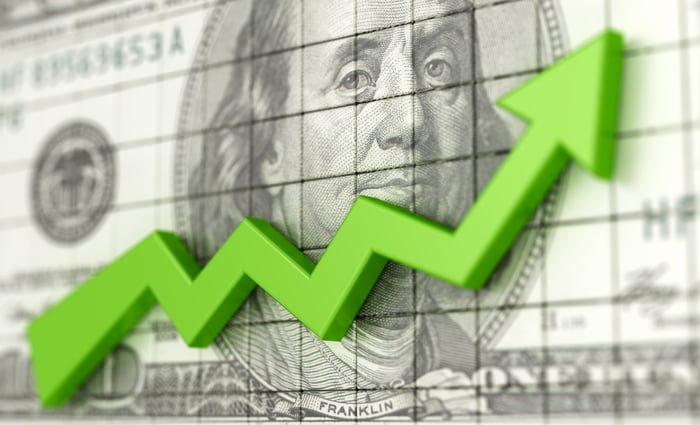Beth Kindig, a tech analyst at the I/O Fund, predicts that Nvidia ( NVDA 1.67%) will reach a $10 trillion valuation by 2030 at the latest. This projection suggests the stock could more than double from its present market cap of $4.5 trillion. Kindig is not alone in her optimism—recent 13F filings reveal that several billionaire hedge fund managers significantly increased their Nvidia holdings in the second quarter.
- Ken Griffin of Citadel Advisors boosted his Nvidia stake by 922%, acquiring 6.1 million shares. Nvidia now ranks as the second largest holding in his portfolio.
- Philippe Laffont from Coatue Management purchased an additional 2.9 million shares, a 34% increase, making Nvidia his portfolio’s eighth largest position.
- David Tepper at Appaloosa expanded his Nvidia position by 483%, buying 1.4 million shares, which now makes it the seventh largest holding in his portfolio.
These hedge fund leaders have consistently delivered impressive results, with their portfolios outperforming the S&P 500 by at least 38 percentage points over the past three years. Such a track record is notable, and investors may want to consider following their example with Nvidia.

Image source: Getty Images.
Beth Kindig projects Nvidia will hit $10 trillion within five years as AI investment accelerates
Nvidia is renowned for its graphics processing units (GPUs), which are specialized chips capable of handling massive amounts of repetitive calculations at high speed. While CPUs are ideal for running software and operating systems, GPUs are superior for rendering graphics and powering artificial intelligence (AI) tasks.
Nvidia’s GPUs dominate the AI accelerator market, accounting for over 90% of sales, and many experts believe the company will retain this dominance through 2030. According to TD Cowen analysts, "Nvidia’s unmatched technology, history of innovation, and substantial growth investments will fuel strong accelerator expansion in the years ahead."
But Nvidia’s edge goes beyond just producing the fastest data center GPUs. Its true strength lies in vertical integration. Nvidia combines its GPUs with CPUs, networking, and interconnect hardware to deliver comprehensive rack-scale solutions for data centers. The company also supports a powerful software ecosystem with its CUDA development tools.
Beth Kindig highlighted these strengths in a client note last year: "We anticipate Nvidia will achieve a $10 trillion market cap by 2030 or sooner, driven by its rapid product innovation, the formidable moat created by CUDA, and its evolution into an AI systems provider offering solutions far beyond GPUs, including networking and software platforms."
Nvidia set to retain AI infrastructure leadership as focus moves to autonomous machines
Nvidia is well placed to stay at the forefront of AI infrastructure as the industry’s attention shifts from digital to physical applications. Physical AI—such as self-driving vehicles and robotics—is expected to transform the global economy over the next decade. Nvidia supplies the essential hardware and software that engineers and developers rely on to create these technologies.
During his keynote at GTC 2025, CEO Jensen Huang stated, "We develop technology used by nearly every autonomous vehicle company." For example, Tesla utilizes Nvidia GPUs for model training in its data centers, while Alphabet's Waymo leverages Nvidia platforms both for training and for powering decision-making in its robotaxis.
Nvidia’s technology is also widely adopted by robotics firms, particularly those developing humanoid robots, such as Foxconn, Boston Dynamics, and Tesla. Moreover, Amazon—the world’s largest producer and operator of industrial mobile robots—relies on Nvidia’s hardware and software to manage and train its warehouse robotics fleet.
Grand View Research projects that annual AI spending on hardware, software, and services will climb by 37% through 2030. Nvidia’s revenue and profit growth could keep pace with this trend. In fact, Wall Street analysts forecast Nvidia’s earnings to rise by 36% per year over the next three years, making its current price-to-sales ratio of 54 appear justified.
In my view, Nvidia is on track to become a $10 trillion company before 2030, and long-term investors may want to consider initiating a modest position now.



